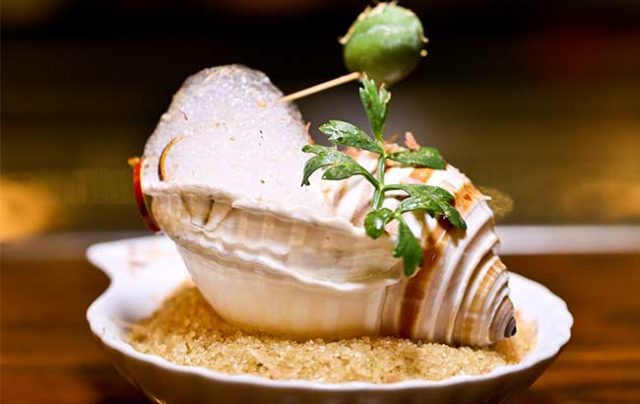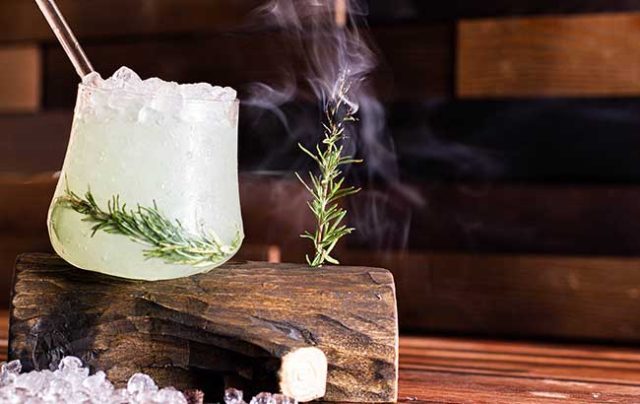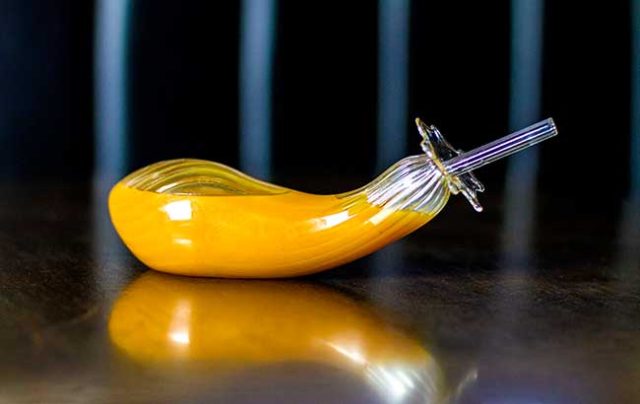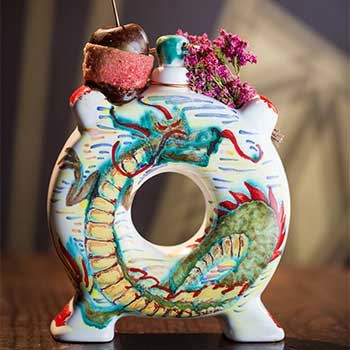A glass act: minimalism vs maximalism
By Alice BrookerGlassware can be one of the ways in which bars can thrill their customers. But are ornate vessels being overshadowed by minimalistic ones?

The first cocktail glass is thought to have been invented in the 19th century, and would now be considered to resemble a Martini glass.
A long stem was designed to keep the cocktails at cooler temperatures, especially when they contained ice, and the wider bowl on top served to effectively diffuse aromas of the liquid.
Today the term ‘glassware’ for certain bars would be deemed a limiting descriptor: bars are decanting concoctions into ceramic holders, wooden cups, metal containers and even seashells.
London speakeasy-style bar Nightjar serves an ‘eclectic mix’ of cocktails, occasionally in standout glasses.
“We believe that glassware should form part of the experience of a drink, rather than just being a vessel to sit in,” Edmund Weil, co-owner of Nightjar, explains.
The outfit once offered the cocktail Beyond the Sea, served in a seashell, as well as a ‘Japanese-style drink’, served in a wooden sake cup.
It even once boasted ‘owl jugs’ that contained Yorkshire Punch – “because Yorkshire has an owl as a representative bird”, Weil adds.
“We like the idea of the vessel not just being a riff off the name of the drink, but contributing to the guest’s emotional experience, as well.”

Playful creations
Canon describes itself as a ‘snug’, ‘retro’ whiskey and bitters emporium, in Seattle, Washington, US.
Owner Jamie Boudreau considers that glassware can help consumer detect the more “serious” serves from the more “playful creations”.
“Glassware can also be a signifier of the drink’s flavour profiles, history or purpose. People who have never visited Canon before think we are this big serious whiskey bar. The glassware helps to dispel that notion, and lets people know that while we take our profession seriously, we are also trying to have fun while doing so,” he explains.
Lyaness, in London’s Sea Containers hotel, also tends to use glassware to remove preconceptions of the site being pretentious, except it uses the opposite approach, presenting simple and elegant vessels.
Louis MacPherson, head bartender at the acclaimed bar, says: “Big spaces like this, especially in hotels, have the potential to feel stuffy and pretentious. Our aim is always to break down that barrier and make people feel at ease and comfortable.”
Lyaness pushes its glassware to present the “clean and clear flavours” of its serves, “using glassware that represents that while looking beautiful”, MacPherson adds.
It seems this approach is becoming increasingly common in the on-trade too – a consumer is likely to catch a ‘less is more’ approach to serves nowadays.
In other words, minimalism is trumping maximalism.
“We’ve definitely seen a shift towards the more minimal approach, and this isn’t necessarily just about glassware but more representative of the direction lots of bars have been going in,” contends MacPherson.
“Simpler serves, cleaner flavours, and letting the drinks deliver are definitely trends we have seen within the industry.” Still, some bars aren’t running away from “more is more”, as described by Weil.
“We have a different kind of approach to drinks. We have adapted over the years to become not quite as baroque as we were in 2012. But we know that guests come to Nightjar for a certain type of experience.”
Bars also adopt extravagant glassware in place of ‘over the top’ garnishes, arguably achieving a balance between the two trends.
“I like to think of fun glassware as a garnish,” explains Boudreau. “I’m not a big fan of large flourishy garnishes unless they are adding necessary flavour, as they involve a lot of labour.
“The first thing the average guest does when seeing a big garnish is remove it and put it on the table, waiting for someone to collect and dispose of it.
“Waste of time and money, and bad for the planet. Instead, I opt for unique presentations that can be utilised again and again.”

Garnished with praise
Weil also says that sometimes the glassware is more simple, as the bar has “some drinks that just come in a normal glass, which have an interesting garnish”.
At times, fancy garnishes may be used over experimental glassware, given the risks involved with the investment in the latter.
Over time, Canon has rolled out a number of vessels that scream for admiration, only to discover downsides to the project.
“I don’t usually have favourites, but one glass I remember was shaped like a squash – but we had to remove it due to its fragility and cost,” Boudreau says.
“We’ve tried many things that haven’t worked out. Usually size, fragility or lack of ease of cleaning are the main factors for a presentation being dropped.”
Weil has struggled in recent times to get hold of “vintage glassware”, which Nightjar used to use a lot. “But because it’s of finite supply,” he explains, “it breaks quite fast. It’s harder to get good-value glassware now than it was 10 years ago.”
Indeed, Macpherson defends using “less showy and more understated glassware” because “you don’t want someone to be scared of breaking the glass they’re holding”.
All the same, glassware can involve a bar team in unexpected ways, sparking the creativity of those wanting to demonstrate artistic flare.
“We have a lot of staff into arts and crafts and stuff, so they’ll work on hand-engraving glassware that we have for our cocktails,” enthuses Weir. “It’s an outlet for creativity. People get to express themselves creatively for a big audience.”
With passionate bartenders and creative staff defending the name of eccentric vessels, its approval rating lies in the hands of the drinkers – but it’s already received the green light from social media users, according to Boudreau and Weil.
Boudreau says: “There has definitely been an uptick in glassware designers coming up with more fun designs in the last decade. I have to assume this is all driven by the social media response to unique and fun presentations.”

Insta inspiration
Nightjar has also noticed its cocktails serve as inspiration for photography, with social media platform Instagram playing a part in the drinks experience.
“We’re always looking for ways in which glassware can contribute to the overall experience, whether that’s multi-sensory or as a visual token,” Weil says.
“Almost like a novelty; and people enjoy it for Instagram.” But can wacky glassware withstand the minimalist aesthetic that has swept the on-trade?
“I think it may not always be in fashion, but there’ll always be a consumer demand for it,” insists Weil.
“We’re very happy to fulfil that. I’ve got nothing against the minimalist cocktail, served in a simple glass, but there are reasons behind a bar’s approach to glassware. Ours is the theatre of it.”
Related news
World Spirits Report 2025: RTDs
World Spirits Report 2025: Liqueurs & speciality spirits
SB's 12 Drinks of Christmas: Taffer's Brown Buttered Bourbon
